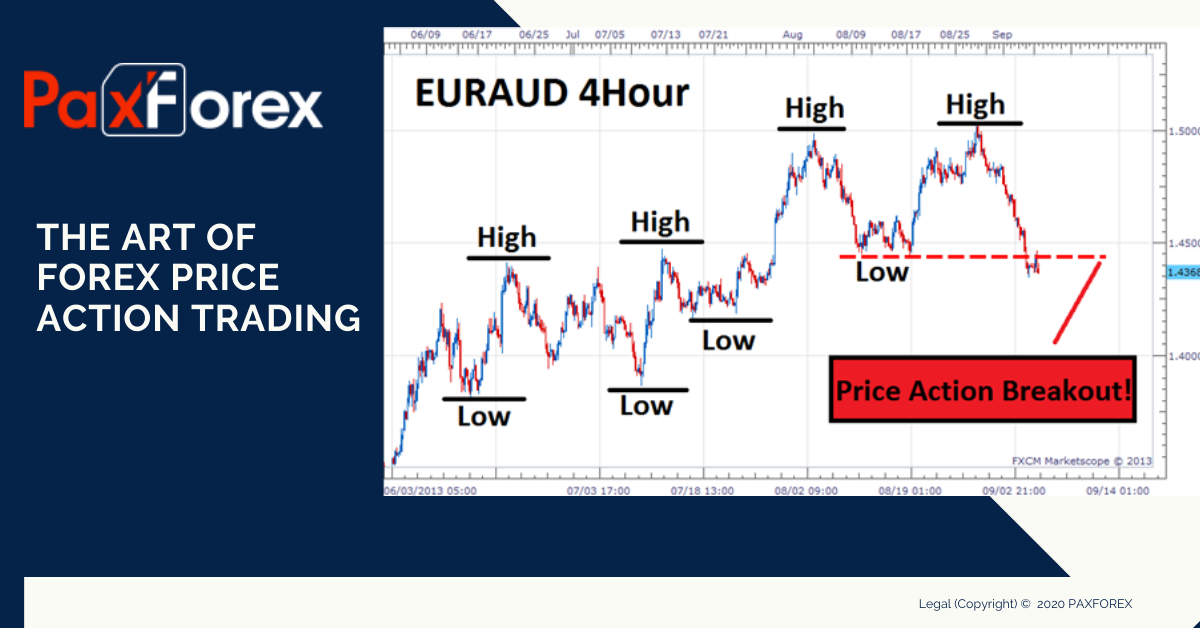
All financial markets generate data about the movement of the price of a market varying periods of time. This data is displayed on the price charts in the form of price action. Price Action is a theory of market behavior based on the psychology of the traders, market makers, and the market itself. It attempts to explain the volatility of the market without news, indicators and other external factors. The main tool of Price Action is the charts of the currency pairs and the patterns on them. The Price Action traders analyze those charts to gain insight into the market and predict future events.
Price action is among the most popular trading concepts. A trader who knows how to use price action the right way can often improve his performance and his way of looking at charts significantly. Price action trading is essentially trading by technical analysis of the movements of the price itself, rather than indicators that are derived from the price. In price action trading, we just look at the Japanese candlesticks, key S/R levels, and major trend lines. The use of price action typically centers around significant peaks and troughs, providing traders with swing highs and swing lows. The use of historical levels of support and resistance levels are also key tools for a price action trader.
Price action is not generally seen as a trading tool like an indicator, but rather the data source off which all the tools are built. Swing traders and trend traders tend to work most closely with price action, eschewing any fundamental analysis in favor of focusing solely on support and resistance levels to predict breakouts and consolidation. Even these traders must pay some attention to additional factors beyond the current price, as the volume of trading and the time periods being used to establish levels all have an impact on the likelihood of their interpretations being accurate.
Price action analysis of a chart has some predictive power in forecasting the future movement in the price of a currency pair. It works because price action often reveals the footprints of large buyers and sellers in the market. Once you really start to understand price action trading, you will see that it is both an “art” and a skill. It is this “art” aspect of price action trading that really separates the pros from the amateurs in the Forex market place. The reason being is that developing your discretionary price action Forex trading skills is what allows you to identify a quality price action setup from one that is not a high probability of a setup.
Price action trading requires a bit of questioning and understanding of the market sentiment. Unlike technical trading systems involving indicators, price action trading can be a smarter way to trade the markets. Of course, patience, skill, and practice are essential, but once a trader gets accustomed to these, price action trading is probably the only thing they will need to trade the markets. It can be practically applied to any trading strategy, from breakouts to moving average cross-overs to oscillators. While price action might seem a bit complicated at first, with due practice it can become second nature for the trader to trade with price action.







